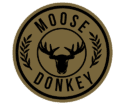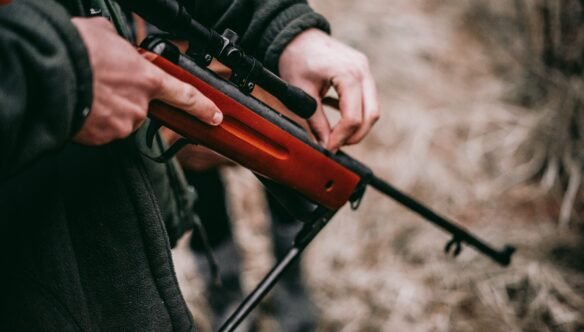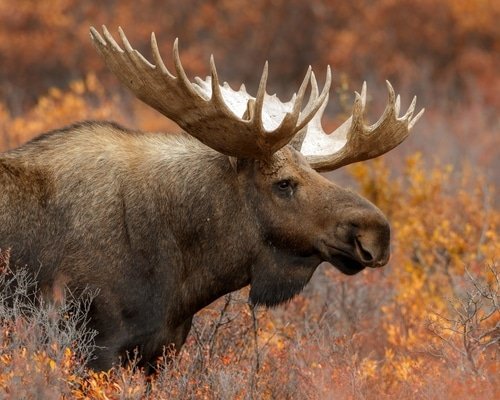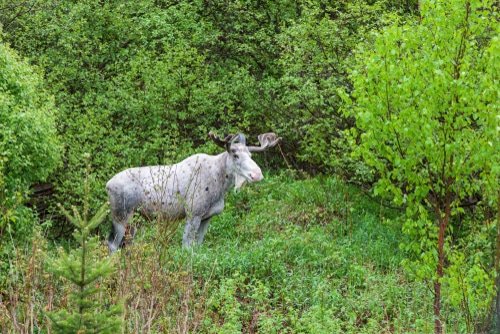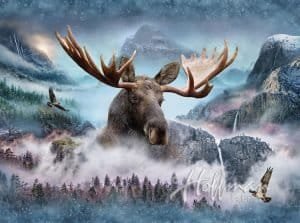Regarding moose hunting, the right rifle’s importance cannot be overstated. A successful hunt depends not only on your skills as a hunter but also on your choice of firearm. The best moose hunting rifles offer power and precision, allowing you to take down these majestic creatures effectively and respectfully. In this article, we will delve into the world of moose hunting rifles, exploring the various factors that should guide your firearm selection.
Why Rifle Selection Matters
Selecting the right rifle for moose hunting is crucial for several reasons. Firstly, a moose is a formidable animal with thick bones and muscles capable of absorbing immense punishment.
To bring down such a majestic beast ethically and effectively, you need a rifle that packs enough punch to penetrate its defenses while ensuring quick and humane kills. Secondly, choosing an appropriate rifle is essential for your hunting safety.
Moose are not known for their docile nature; they can be unpredictable and even aggressive when wounded or cornered. Having a reliable firearm that enables accurate shots at safe distances will give you confidence in handling potentially dangerous situations.
Considerations for Moose Hunting Rifle Selection
Several factors come into play when choosing a rifle designed for moose hunting. The first consideration is caliber—opting for a cartridge with sufficient energy and penetration capabilities is paramount. Additionally, aspects like accuracy, maneuverability in rugged terrains, stock design for comfortable handling during long hunts, optics options to enhance accuracy at longer distances, and ammunition choices suitable for large game hunting—all these elements contribute to finding the perfect firearm to accompany you on your moose hunting adventures.
In the following sections of this article, we will delve deeper into each aspect mentioned above, providing detailed insights and recommendations to guide you in selecting the ideal moose hunting rifle. Stay tuned for a comprehensive exploration of bolt-action, lever-action, and semi-automatic rifles suited for this majestic pursuit!
Understanding Moose Hunting Rifles
Types of rifles commonly used for moose hunting
When it comes to moose hunting, selecting the right firearm is crucial for a successful and ethical hunt. Hunters favor various types of rifles, each with its advantages and considerations. Let’s explore three popular choices: bolt-action, lever-action, and semi-automatic.
Bolt-action rifles
Hunters have long favored bolt-action rifles due to their reliability and accuracy. These guns feature a bolt mechanism that requires the shooter to eject spent cartridges and load new ones manually.
Bolt-actions are known for their exceptional accuracy, essential when aiming at a massive target like a moose. They typically have detachable magazines that allow for quick reloads.
Lever-action rifles
Lever-action rifles may remind you of those cowboys from old Western movies, but don’t underestimate their effectiveness in moose hunting! Although lever actions may not offer the same magazine capacity as other rifle types, they compensate for it with smooth cycling and rapid follow-up shots. The iconic lever allows shooters to quickly chamber rounds without taking their eyes off the target—an advantage in situations where a second shot is needed swiftly.
Semi-automatic rifles
If you value quick follow-up shots and increased firepower, semi-automatic rifles might be your best bet for moose hunting. These firearms automatically load a new round into the chamber after each shot fired without requiring manual operation like bolt-actions or lever-actions.
Semi-autos provide faster shooting capabilities while maintaining excellent accuracy. However, it’s important to note that some jurisdictions may restrict the use of semi-automatics for hunting big game like moose.
Choosing the right type of rifle ultimately depends on your personal preferences and the specific demands of the hunting environment. Whether you opt for the reliability of a bolt-action, the classic charm of a lever-action, or the rapid-fire capability of a semi-automatic, consider factors like accuracy, ease of use, and local regulations when making your decision.
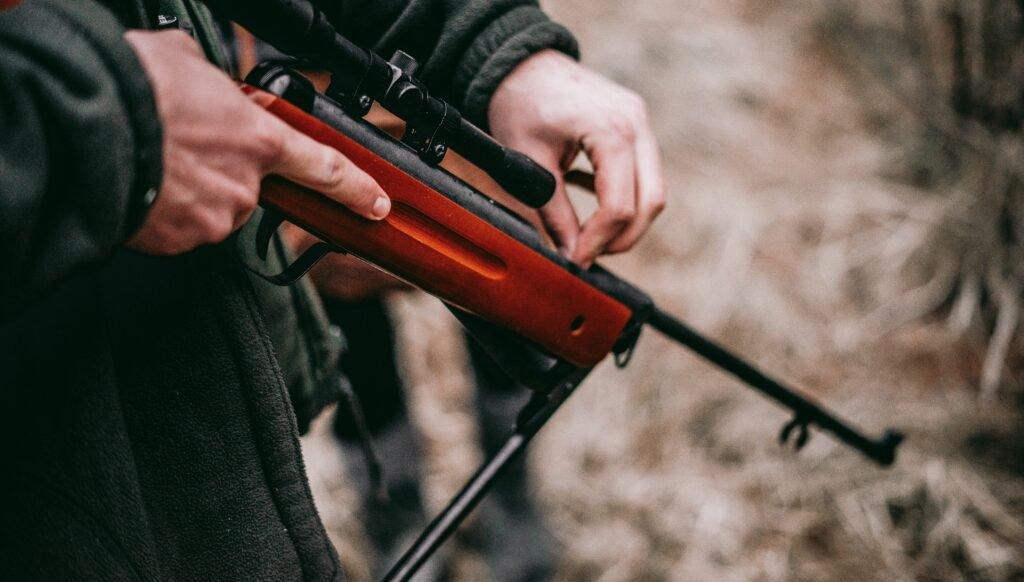
Caliber Selection for Moose Hunting Rifles
Making the Right Shot: Optimal Calibers for Taking Down a Moose Effectively and Ethically
When hunting big game like moose, selecting the right caliber is crucial. A well-placed shot is vital for ethical reasons and ensures a quick and humane takedown. Here, we will explore three popular calibers considered some of the best options for moose hunting: the .30-06 Springfield, the .300 Winchester Magnum, and the .338 Winchester Magnum.
.30-06 Springfield: The Versatile Workhorse
The venerable .30-06 Springfield has earned its reputation as a versatile cartridge capable of taking down large games like Moose. Its wide range of bullet weights, ranging from 150 to 220 grains, offers flexibility in various hunting conditions. The .30-06 Springfield delivers excellent accuracy and terminal performance, making it an ideal choice for hunters looking for a reliable option that can easily handle moose-sized game.
.300 Winchester Magnum: Power and Accuracy Combined
For hunters who desire more power with a longer reach, the .300 Winchester Magnum is a popular choice. This magnum cartridge packs a punch with its high muzzle velocity and superior energy retention at extended ranges.
With bullet weights typically ranging from 165 to 200 grains, this caliber offers outstanding stopping power even when faced with challenging shot angles or thick brush. Its flat trajectory ensures accuracy over long distances, making it well-suited for hunters who prefer precision shots on moose.
.338 Winchester Magnum: The Mighty Moose Brawler
If you’re looking for sheer stopping power capable of taking on formidable game like moose head-on, then the .338 Winchester Magnum should be on your radar. This hard-hitting caliber is known for its exceptional penetration and bone-crushing energy transfer.
With bullet weights ranging from 200 to 250 grains, the .338 Winchester Magnum delivers devastating performance, ensuring a clean and ethical kill. Hunters who encounter dense vegetation or anticipate longer shots will appreciate the potency of this caliber, offering confidence in the field.
Selecting the right caliber for moose hunting ensures an effective and ethical takedown. The .30-06 Springfield, .300 Winchester Magnum, and .338 Winchester Magnum are all excellent choices that offer varying levels of power and accuracy.
Ultimately, it’s essential to choose a caliber that suits your shooting abilities and preferences while adhering to local regulations on minimum calibers for moose hunting. Responsible firearm selection and proper shot placement are key to making your hunting experience successful and memorable.
Rifle Features and Considerations for Moose Hunting
The barrel length and its impact on accuracy
Regarding moose hunting, the length of your rifle’s barrel can significantly affect accuracy and maneuverability. A longer barrel generally provides better accuracy due to increased muzzle velocity, resulting in a flatter trajectory.
This means your bullet will maintain its course over longer distances, increasing your chances of hitting the target accurately. However, it’s important to consider the trade-off between barrel length and maneuverability.
Longer barrels can be cumbersome in dense foliage or when navigating through tight spaces, potentially hindering quick target acquisition. Therefore, finding a balance between optimal barrel length for accuracy while still allowing for ease of movement is crucial.
Stock material and design for comfortable handling during long hunts
Your moose hunting rifle stock is pivotal in providing comfortable handling during those long hunts in rugged terrains. The material used for the stock can greatly affect its weight, durability, and recoil absorption capabilities.
Synthetic stocks are lightweight and resistant to harsh weather conditions but might not have the same aesthetic appeal as traditional wooden stocks. On the other hand, wood stocks offer natural beauty but may be slightly heavier and more susceptible to weather damage.
When considering stock design, ergonomics should take precedence. Look for rifles with adjustable cheek-rests or length-of-pull features that allow customization based on individual preferences or physical attributes.
Optics options to enhance accuracy at longer distances
Investing in quality optics is essential to maximize your chances of hitting targets accurately at extended ranges while moose hunting. Scopes with variable magnification capabilities enable you to adjust zoom levels based on target distance and environmental conditions such as lighting or terrain obstacles.
Choose scopes with larger objective lenses (the front lens) as they allow more light to enter, resulting in a brighter and clearer image. Additionally, features like illuminated reticles can be advantageous during low-light scenarios.
When selecting the perfect scope for moose-hunting adventures, consider factors such as reticle type (e.g., duplex, BDC, Mil-Dot), magnification range, and optical clarity. By carefully considering these rifle features and considerations such as barrel length, stock material and design, and optics options to enhance accuracy at longer distances, you can ensure that your firearm selection is optimized for successful moose hunting experiences.
Always remember to take into account your preferences and physical capabilities when making these choices. Now that we’ve covered the importance of firearm selection let’s move on to the next section, where we dive into ammunition choices specifically tailored for moose hunting rifles.
Ammunition Choices for Moose Hunting Rifles
Bullet types suitable for moose hunting, such as soft point or bonded bullets
When choosing ammunition for moose hunting, opting for bullet types designed for this formidable game is crucial. Soft point bullets are popular due to their controlled expansion upon impact, which ensures better energy transfer and greater stopping power. These bullets feature a lead tip with a softer copper jacket, allowing them to mushroom upon contact and create larger wound channels.
Bonded bullets are another excellent option as they retain their weight well and maintain structural integrity even after penetrating tough animal hides or bones. This prevents fragmentation and guarantees deep penetration, which is ideal for taking down such massive creatures.
Bullet weight selection based on desired terminal performance
Determining the appropriate bullet weight depends on the desired terminal performance when hunting moose. Generally, heavier bullets are preferred as they provide deeper penetration and higher energy transfer upon impact.
A typical range of bullet weights suitable for moose hunting falls between 150 to 250 grains in various calibers, such as .30-06 Springfield or .300 Winchester Magnum. However, it’s important to consider factors like distance, muzzle velocity, and individual firearm characteristics when deciding on bullet weight.
Accessories and Gear Recommendations for Moose Hunting Rifles
Sling options to carry your rifle comfortably in the field
Carrying your rifle comfortably during long hunts is essential, especially when pursuing elusive moose in rugged terrains. Investing in a high-quality sling can greatly alleviate fatigue while ensuring easy access to your firearm when needed.
Look for slings with adjustable straps that distribute weight evenly across both shoulders. Padded or neoprene slings with quick-release buckles provide added comfort and convenience during long treks.
Bipods or shooting sticks to stabilize your shots.
Accurate and precise shots, especially at longer distances, are crucial when hunting moose. Bipods or shooting sticks can be invaluable tools for stabilizing your rifle and minimizing unwanted movement while aiming.
Bipods offer a firm base with adjustable legs to find the optimal shooting position in various terrains. On the other hand, shooting sticks are lightweight and portable options that can be adjusted to different heights and provide stability for quicker shots.
Scope covers or protectors to safeguard optics from harsh weather conditions
Optics are vital in successful moose hunting, allowing you to spot the game from a distance and ensure accurate aim. To protect your investment from harsh weather conditions, it’s recommended to use scope covers or protectors.
These accessories shield your optics from rain, snow, dust, and scratches that could impair visibility or damage delicate lenses. Look for covers made of durable materials like neoprene or polymers that offer a snug fit without obstructing quick target acquisition.
Legal Considerations and Regulations for Moose Hunting with Rifles
Researching state/provincial laws regarding caliber restrictions
Before embarking on a moose hunting adventure with your rifle, it’s crucial to thoroughly research the state/provincial laws governing firearm regulations and potential caliber restrictions. Depending on local wildlife management practices, different jurisdictions may impose specific limitations on suitable calibers for hunting moose. Being well-informed about these regulations ensures compliance with the law while using the best rifles for moose within legal parameters.
Compliance with minimum caliber requirements
In addition to researching caliber restrictions, adhering to any minimum caliber requirements set forth by state/provincial authorities is important. These requirements are usually implemented to ensure ethical and effective harvests while prioritizing the animal’s welfare. Complying with these regulations can contribute to sustainable moose populations and promote responsible hunting practices.
Understanding any additional regulations specific to moose hunting
Apart from caliber restrictions and minimum requirements, you should familiarize yourself with additional regulations specific to moose hunting in your jurisdiction. This may include obtaining licenses or permits, adhering to designated hunting seasons or zones, respecting bag limits, or following proper tagging procedures. Understanding and abiding by these rules ensures legal compliance and contributes to conservation efforts to preserve moose populations for future generations.
Conclusion
Selecting the right ammunition is paramount for a successful hunt in moose hunting rifles. Soft point or bonded bullets offer optimal terminal performance in a formidable game. Additionally, investing in accessories like slings for comfort, bipods or shooting sticks for stability, and scope covers for weather protection significantly enhances your overall shooting experience.
However, staying well-informed about legal considerations and regulations about moose hunting with rifles in your area is equally vital. By abiding by these guidelines and adopting ethical practices throughout your pursuit of this magnificent creature, you contribute to responsible firearm selection and actively participate in conservation efforts toward sustainable wildlife management.
